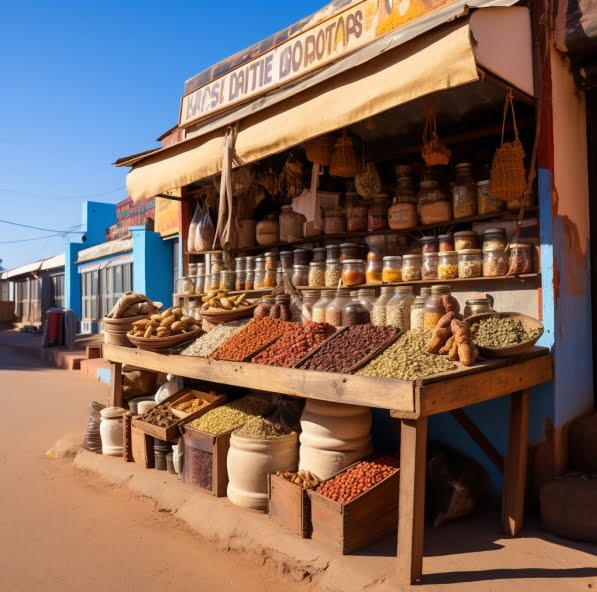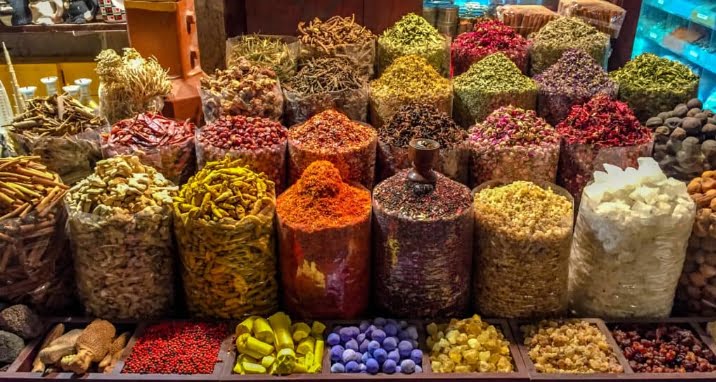Spice Industry
The global spices market size was valued at USD 5.86 billion in 2019 and is expected to expand at a compound annual growth rate (CAGR) of 6.5% from 2020 to 2027. Increasing demand for authentic cuisines globally is one of the foremost factors driving the consumption of spices. The growing fondness towards enjoying various kinds of flavors in foods and snacks is likely to prompt manufacturers to produce high-quality, appealing, and reliable products that can maintain consistent standards globally. Spices can alter the taste of specific cuisines and correlate with flavors of various regions. For instance, the Middle East and Southeast Asia are likely to contribute to fusions, which is expected to gain presence in the market over the forecast period.

Type of Spice
Spices are seeds, dried fruits, roots, and bark used to add flavour, aroma, and colour to food. Various spices of various origins and cuisines are available in various forms, including ground, crushed, and whole. Each of these spices contributes a unique flavour, aroma, and taste to the food. Some commonly used spices include cinnamon, black pepper, cumin seeds, nutmeg, cloves, chilli powder, turmeric, ginger, and garlic.

Different from old spice businesses, more and more spice came out in the market. The top-selling spice is the following:
- Black pepper: the king of spices, is one of the world’s most popular spices. It adds flavour and aroma in small doses to various dishes.
- Cinnamon: one of the oldest spices used in the kitchen. It has a sweet and warm flavour, so it fits both sweet and savory dishes.
- Cardamom: a versatile spice. Green pods can be used as a whole spice or ground to obtain cardamom powder. It has a complex flavour profile. It is citrus and floral with minty notes.
- Turmeric: a famous spice in Indian cuisine. It is suddenly everywhere. Turmeric has a bitter and earthy flavour. Curcumin, the active ingredient in Turmeric, has antioxidant and anti-inflammatory properties.
- Cumin: widely used in Mediterranean, Middle Eastern, and Indian cuisines. It adds a strong woody, slightly bitter flavour to food.
- Coriander spice: a group of seeds of the cilantro plant. It is better to toast and ground them before use because they are tough to chew.
- Garlic powder: a staple spice derived from dehydrated garlic. Its subtle sweet taste is the perfect enhancement for flavours in your meal.
- onion powder: It is made of dried onions but keeps the pungent flavour of fresh ones. It is an asset in your kitchen that adds a special touch to your food.
- Nutmeg: Sweet, Warm, and Spicy. We usually use it in sweet dishes like pumpkin pies. It perfectly fits with sweets that contain cinnamon as well.
- Ginger:it is widely used in Asian, Indian, and Middle Eastern cooking. It has a strong, pungent, and spicy flavour.
- Paprika is very popular for its warm red colour and mild heat. It is a common occurrence in Spanish and Mexican cuisine. Paprika is sweet with a slightly smoky flavour. For a stronger effect, you can use smoky paprika.
- Cayenne: a fiery spice with a red hue that you can use to add heat to any dish. It originated in Central and South America.
- Check more 50 best Rated Herbs and Spices In the world
Application of Spice
The application of spice is getting wider and wider with the development of the times. This is a boon for the spice business for sale. From the past just as a flavouring, it was found everywhere on tables and in kitchens all over the world. It is an integral part of the cuisine. Nowadays it has greater health uses. Piperine, the compound responsible for the pungent flavour of black pepper, has been the subject of research for its potential antioxidant and anti-inflammatory properties. Black pepper is also valued for its role in improving nutrient absorption, especially when combined with other spices such as turmeric.

How to Start a Spice Business
To achieve spice business ideas, here are some steps you can follow:
- Research the Spice Industry from your country: Gain a comprehensive understanding of the spice industry, including market trends, competition, and potential customers. Identify popular spices, their uses, and the demand for them in your target market.
- Develop a Business Plan: A detailed business plan outlining your objectives, target market, pricing strategy, sourcing of spices, marketing and sales approach, and financial projections. Why am I starting this spice business? Who will be the customers who buy from us? To Where I sell these products? These are the key things to know before starting a spice business. All such important questions will be covered in the Business Plan. So make a Good Plan.
- Obtain Necessary Licenses and Permits: Check the local regulations and requirements for starting a spice business. Obtain the necessary licenses, permits, and certifications to ensure compliance with food safety standards and other legal obligations.
- Source Quality Spices: Establish reliable supplier relationships to source high-quality spices at competitive prices. Consider working directly with spice farmers, cooperatives, or reputable wholesalers to ensure the authenticity and freshness of your products.
- Set up a Production Facility: Depending on the scale of your business, set up a production facility equipped with the necessary equipment and storage facilities. Ensure proper hygiene and sanitation practices are followed during processing and packaging.
- Branding and Spice Packaging: Develop a strong brand identity for your spice business, including a memorable brand name, logo, packaging design and spice business equipment. Invest in attractive and informative packaging that reflects the quality and uniqueness of your spices.
- Establish Distribution Channels: Identify distribution channels to reach your target customers effectively. This can include setting up an online store, partnering with local grocery stores, participating in farmers’ markets, opening a spice brand shop or supplying to restaurants and food service establishments. Social media is also a good channel to show our spice products.
- Develop Marketing Strategies: Implement marketing strategies to create awareness and generate demand for your spice products. Utilize online platforms, social media, content marketing, and collaborations with food bloggers or influencers to promote your brand.
- Provide Excellent Customer Service: Focus on delivering exceptional customer service to build loyalty and positive word-of-mouth. Respond promptly to customer inquiries, provide product knowledge, and address any concerns or issues.
- Monitor and Adapt: Continuously monitor your business performance, customer feedback, and market trends. Adapt your strategies as needed to stay competitive and meet changing customer preferences.
How Much Does it Cost to Start a Spice Business?
Spice business components mainly include staff cost, courier cost, packing equipment cost, marketing cost, online platform cost and offline shop cost.
Because the cost of each place is different, you can refer to different places, here is a Free ROI Packing Machine. excel. You can estimate your return and spice business plan.
Online platforms such as Amazon, and eBay can be determined in the early stages, and the later marketing costs depend on the budget. Expand your Customer Base. Offer existing customers a free Spices product, a free month of service, or some other reward for referring new customers. This way, you can retain your customers for a long time.
You can achieve success despite the stiff competition. The only thing you need to ensure is your 100% effort for the business. If you dedicate yourself totally then you will definitely reap amazing profits because the spices business is quite lucrative and is in demand throughout the year!
Do not expect profits right away, keep patience and progress with tiny steps. Success is assured! All the best for your online spices business.






